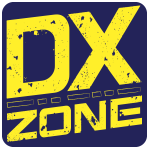The NanoVNA is a very compact and portable vector network analyzer (VNA) capable to work from 50KHz to 900MHz. The NanoVNA is a self-contained device with an embedded touch screen, powered with a rechargeable battery.
The VNA can be also remotely managed with a dedicated software, connecting the NANOVNA via the embedded USB port.
This test equipment was born as a project to provide an RF gadgets for enthusiasts, but it is also a very useful tool.
Features:
2.8 inch TFT LCD touch screen display.
Built-in lithium battery power supply, more convenient to use.
The measurement frequency range is 50KHz~300MHz (can be extended to 50KHz~900MHz, enabling advanced firmware).
Basic operation: Set frequency range, select calibration, display format and channel, save.
You can change the display format and channel selection at any time.
In normal test mode, tap the right part of the screen or press the Rotary encoder to enter the menu.
Tap the screen or turn the dial to select a menu item.
Portable and compact, easy to use and transport.
NANO VNA Specifications:
Main material: PCB
Colour: white
Display: 2.8 inch TFT (320*240)
Measurement frequency: 50KHz~300MHz (50KHz~900MHz, enable advanced firmware)
HF output: -13dbm (maximum -9dbm)
Measuring range: 70dB (50KHz~300MHz), 40dB (300M-900MHz, enable extended firmware)
Port SWR: 1.1
USB interface: USB type C Communication mde: CDC (serial)
Power: USB 5V 120mA 120mA 120mA
Battery: 1 * built-in lithium battery, 400mAh (included)
Number of scanning points: 101 (fixed)
Display Tracking: 4, Marker: 4, Save setting: 5
Printed circuit board size: 68 * 50 * 10mm / 2.7 * 2.0 * 0.4in (without plug, lever switch)
Package list:
1 * NanoVNA Host
2 * 30mm SMA plug to plug RG174 RF cable
1 * SMA socket – socket – socket – socket – socket – socket – plug
1 * USB cable (Type-C)
1 * SMA Simple calibration kit (short / open / load)






